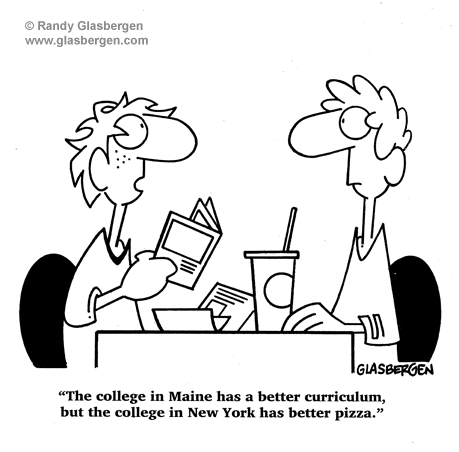I must write it all out, at any cost. Writing is thinking. It is more than living, for it is being conscious of living.
Anne Morrow Lindbergh
I have taught the same course, ENG 140, online and face to face for the pasts three years. As I developed the online course, I tried to ensure that the students in both deliver modes would receive similar experiences. One of the ways I accomplish this is through weekly discussion boards that mirror the small and large group discussions I have in class. In the online class, students are required to post at least a paragraph to the discussion prompt, and they must respond to two other students in a way that furthers the conversation. In my face to face class, I give the students the prompt orally and have them discuss their answers in small groups before they reported out to the larger context. It didn't take long before I noticed an interesting trend:
- The online students are forced to participate if they want to receive their points. The classroom students can keep quiet during a small group discussion, and some participants defer to the outspoken or dominant students.
- The online students tend to express and explain their thoughts more clearly. More original thought is presented, and once students become more comfortable with each other, better questions and challenges occur when responding to their fellow students.
- The weaker online students eventually begin to mimic those students with the best posts; I don't know yet whether this is because of the modeling of a good post or because of not wanting to do a poor job in front of their fellow students.
In response to this, I have incorporated more pre-discussion writing in my classroom. This gives the quiet students time to process their thoughts before they are challenged to participate, and I find that all of the students take the prompts more thoughtfully. As a result, the small group discussion are becoming more dynamic, and the large group discussions are taking on new dimensions.

For example, in my STU 150 class, as we were working through Bloom's Taxonomy, I wanted students to experience higher levels of thinking. We began with an old picture of the rapper 50 Cent (similar to the one at the left). In the photo I used in class, 50 Cent is seated with one hand holding drugs, the other throwing bullets at the camera. I first asked the individual students to write down five observations about what they saw in the photo. Then they had to write five more. And again. Second, they had to infer what 50 Cent was thinking based upon the expression on his face. Finally, they had to consider how this rapper would define "masculine" or "manhood." Once they had written their responses, they were put in groups to share their answers. Interestingly, at least one student in each group had either knowledge about the rapper's background or about the kind of bullets shown in the photo that provided more details for our analysis. When we gathered back in the larger group, more and more ideas popcorned around the room as we examined our evaluations and analysis. All the while, we related our responses to the choices made by the rapper and the photographer in the photo shoot, including both the props and the background, to determine the intent behind the image. What I thought was going to be a quick exercise in critical thinking ended up with an in-depth discussion that took over 30 minutes. I don't think the discussion would have been as lively if students weren't given the time to think on their own first.
David Miller writes: "...Vincent Ruggiero draws an interesting distinction between two methods of
thinking: "the production of ideas (creative thinking) [that is] accomplished by widening your focus and looking at many possibilities," and "the evaluation of ideas (critical thinking) [that is] accomplished by
narrowing your focus, sorting out the ideas you've generated, and identifying the almost reasonable ones." He goes on to assert that "both processes are natural activities for human beings" (3). If both of these practices are natural activities, why, then, do so many developmental students find it difficult to think either creatively or critically? I must contend that most of these students are fully capable of thinking at a critical level. However, in many cases, I feel that they are not fully aware of the fact that they are able to think this way; furthermore, they do not understand how they can get from the superficial state in which we most often function to the metacognitive state they must acquire to function in the academy. We tell them all the time that they need to "think critically." What we often fail to do is show them how." Through having my students respond to writing prompts that ask them to evaluate, infer, and analyze, they are learning to move beyond basic knowledge and comprehension to more complex kinds of thinking."
Creative and critical thinking is what I want my students to practice in our discussions about anything we read, and in the past some of those discussions have fallen flat, no matter how creative the prompts, especially in my 0-level classes. Having students write first provides several benefits to small group discussions. The sleepy students get to take the time to rev up their brain cells with pen and paper. The shy students get to practice their thinking before they open their mouths. The biased students get to channel and recognize their closed-minded thinking. All the students are challenged to support their thinking from what they have read or elsewhere; thus, mere opinions aren't enough. In fact, I like to time the writing so that students are forced to write more than they originally planned. I instruct them, "If you run out of things to write, simply write 'blah blah blah' continually until your brain gets bored." Very few students have had to resort to that, but many have confessed to realizing how much further they could go with their thinking.
Because I have found this writing promotes deeper thinking, I am considering including
a journal in all my reading classes. I have not formulated yet how this will work, but since I already require reader responses as homework for everything we read, I think this journal might become a reflective piece that students can revisit to see how their critical thinking skills have developed over the semester. Stay tuned...as I ponder the possibilities.
 I liked the challenge, but nine weeks in the middle of the semester was difficult. Because I am a "Golden Retriever" personality, once I got started there was no way I was going to quit, even if it meant a late night or pushing aside some other responsibility. Ask my husband...or my dogs! Seriously, how important can laundry be when weighed in the balance against insights and creativity? Of course, there are some responsibilities for which I am always finding excuses to delay.
I liked the challenge, but nine weeks in the middle of the semester was difficult. Because I am a "Golden Retriever" personality, once I got started there was no way I was going to quit, even if it meant a late night or pushing aside some other responsibility. Ask my husband...or my dogs! Seriously, how important can laundry be when weighed in the balance against insights and creativity? Of course, there are some responsibilities for which I am always finding excuses to delay.

